“I’m Jimmy Carter and I’m running for president,” was a slogan featured during the 1976 presidential campaign. Most people responded with “Jimmy who?” Despite not having a nationally-known name, the Georgia native gained popularity with voters and became the 39th President of the United States.
Although I’d seen it many years ago, I figured I should take my Georgia-raised children to visit the Carter Presidential Museum at least once. After all, he’s the only US President from our state. However, the pandemic changed all of that as presidential libraries and museums remained shuttered longer than most other attractions. Recently, the opportunity arose to visit with Thing 1.
The Grounds at the Carter Center
After presenting our online tickets, the museum employee recommended we walk the grounds before walking through the exhibits. Featuring two small lakes, the grounds boast a walking trail with Atlanta’s skyline as the backdrop.
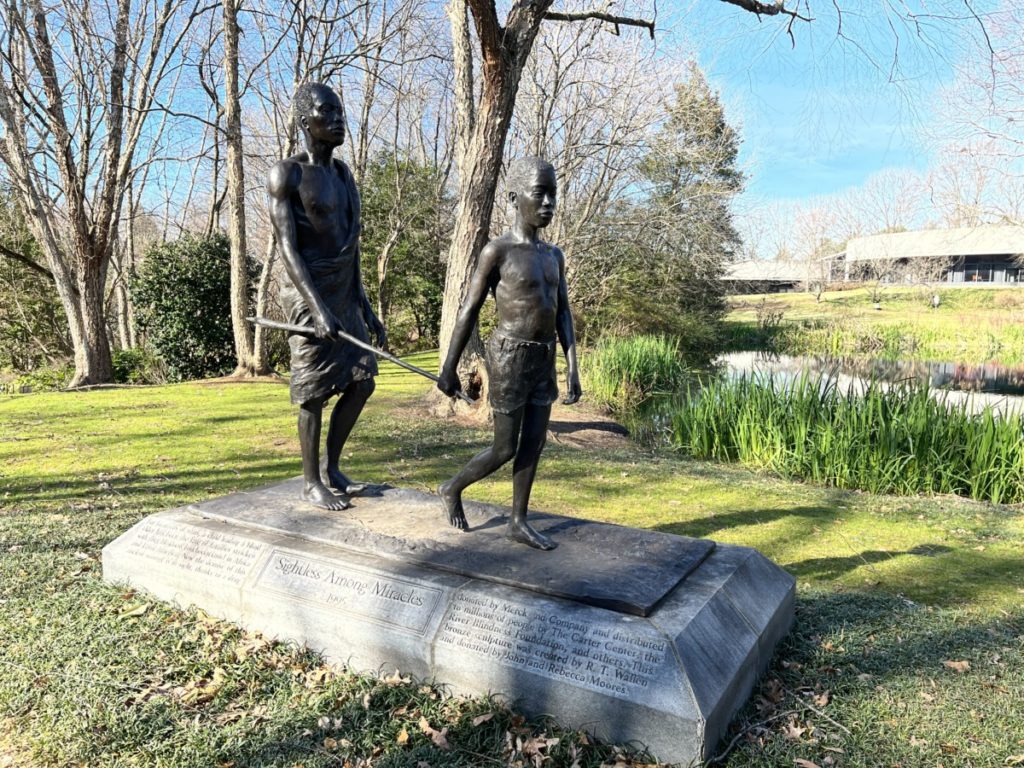
A sculpture created in 1995 pays tribute to volunteers at the Carter Center and the River Blindness Foundation, who disctriubted donated medications to people in Africa. Founded in 1982 with Emory University, the nonprofit lives up to their mission of improving global health while advancing democracy. Read more about the organization and their contributions to the global landscape here.
The Museum at the Carter Center
Early history
Since the museum ceased showing the introductory film, we started in the main gallery. Carter’s family lived on a farm, just outside of Plains, Georgia. During his boyhood, the Carters were just one of two white families in the area.
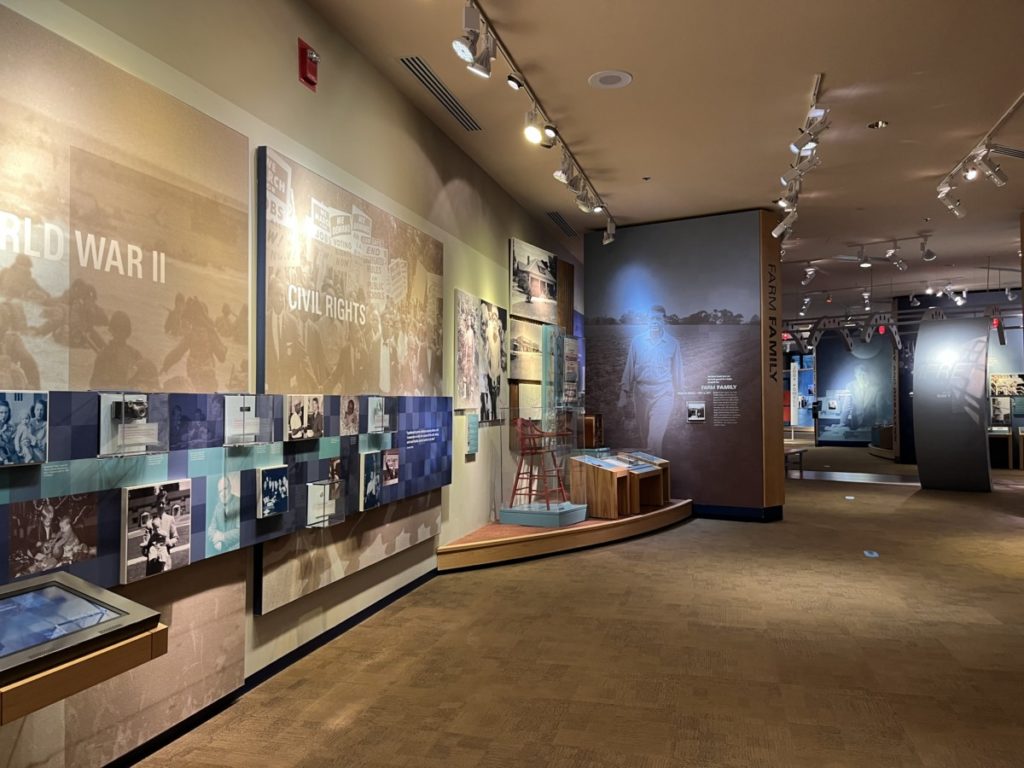
Most people think of Carter as a peanut farmer. But before returning to his family’s business, Carter was well on his way to a long career in the US Navy. In the years following his 1946 graduation from the US Naval Academy, Carter served on battleships and submarines, became a lieutenant, and took graduate classes in nuclear physics at Union College. During this time, he and his wife Rosalyn (also from Plains) had three sons. Carter was a senior officer on the training crew for a nuclear submarine when his father died. The family returned to Plains – clearing only $200 their first year.
Political History
Once settled in Plains, Carter became involved in the community and earned a seat on the Sumter County Board of Education. In 1962, Carter ran and won his first term as a state senator after proving voter fraud by his opponent. After his second term, he ran for governor in 1966. Despite losing to Lestor Maddox, Carter ran again and won in 1970. At the time, Georgia didn’t allow a person to serve two consecutive gubernatorial terms and Maddox (seated on Carter’s left in the picture below) became his lieutenant governor by popular vote.

Presidency
When Carter first campaigned for president, most people outside the state didn’t know who he was. American voters, jaded by established politicians they felt responsible for Watergate and Vietnam, liked Carter’s down-to-earth manner. With Walter Mondale as his running mate, Carter became the 39th president.
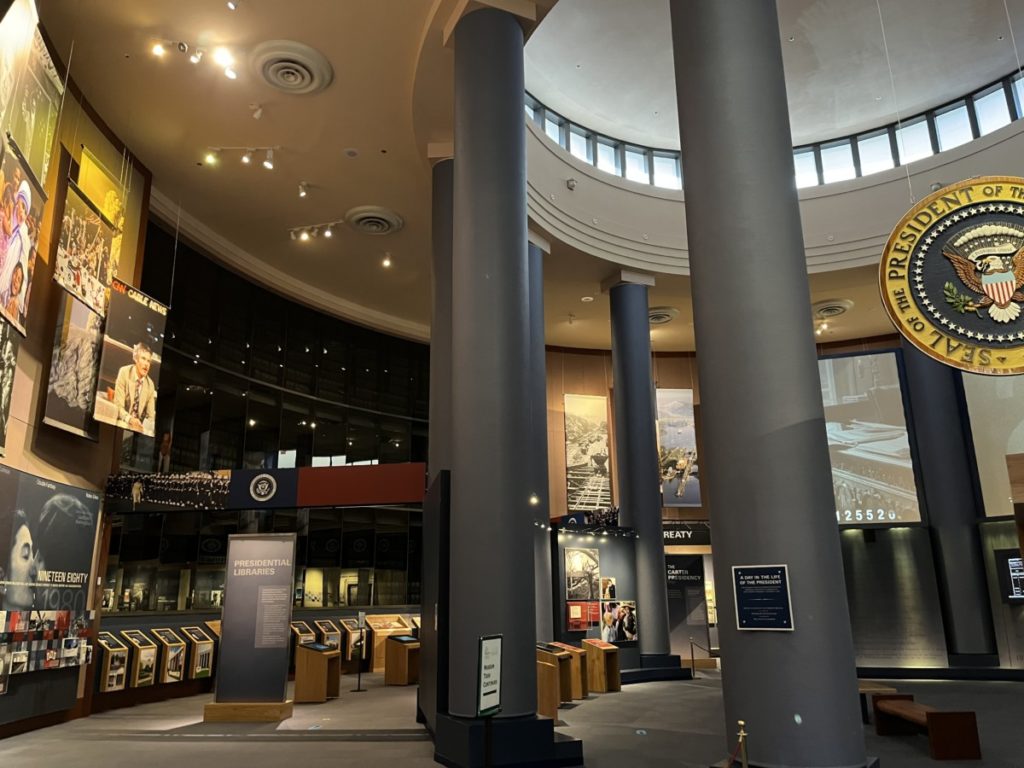
The museum highlights top headlines during Carter’s presidency: Star Wars hits movie theatres, the first test-tube baby is born, Walter Cronkite begins his 17th year as CBS anchor, and Muhammed Ali regains world heavyweight championship title. The four years had plenty of problems too: stagflation, the energy crisis, the gasoline shortage, and the Iranian hostage crisis.
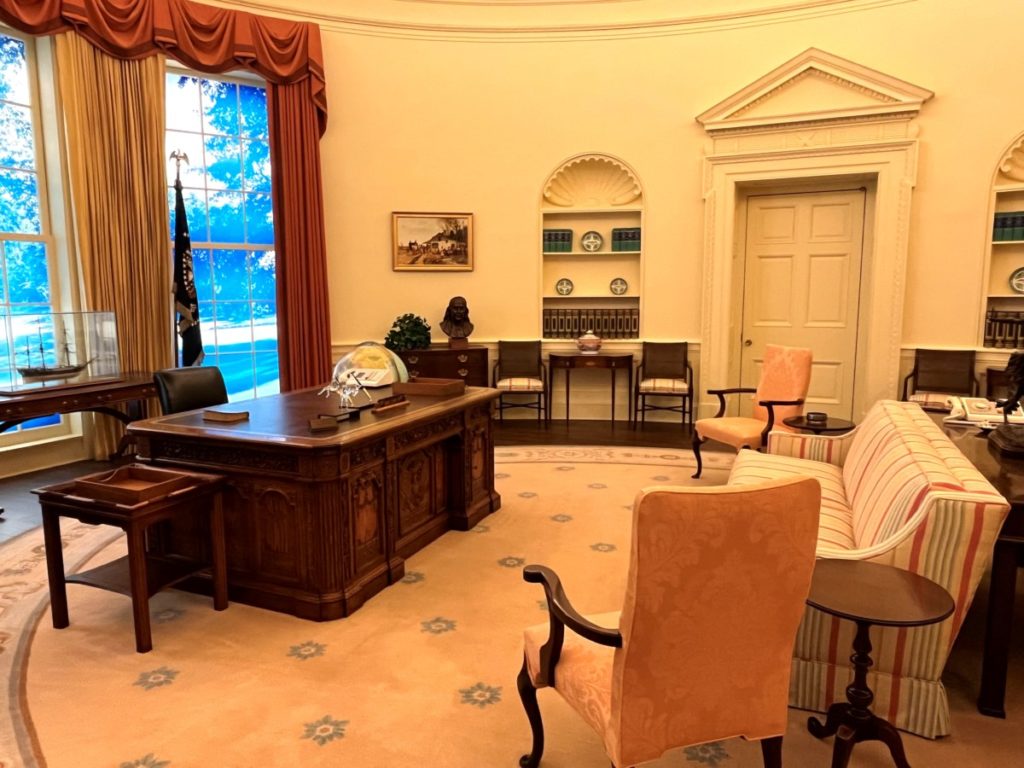
Every presidential museum replicates the Oval Office, and this museum is no different. During Carter’s administration, he created the Department of Energy, enacted the Alaska Lands Act, and presided over the Camp David Accords. Additionally, his wife Rosalyn attended many of his cabinet meetings while focusing on mental health issues and the elderly.
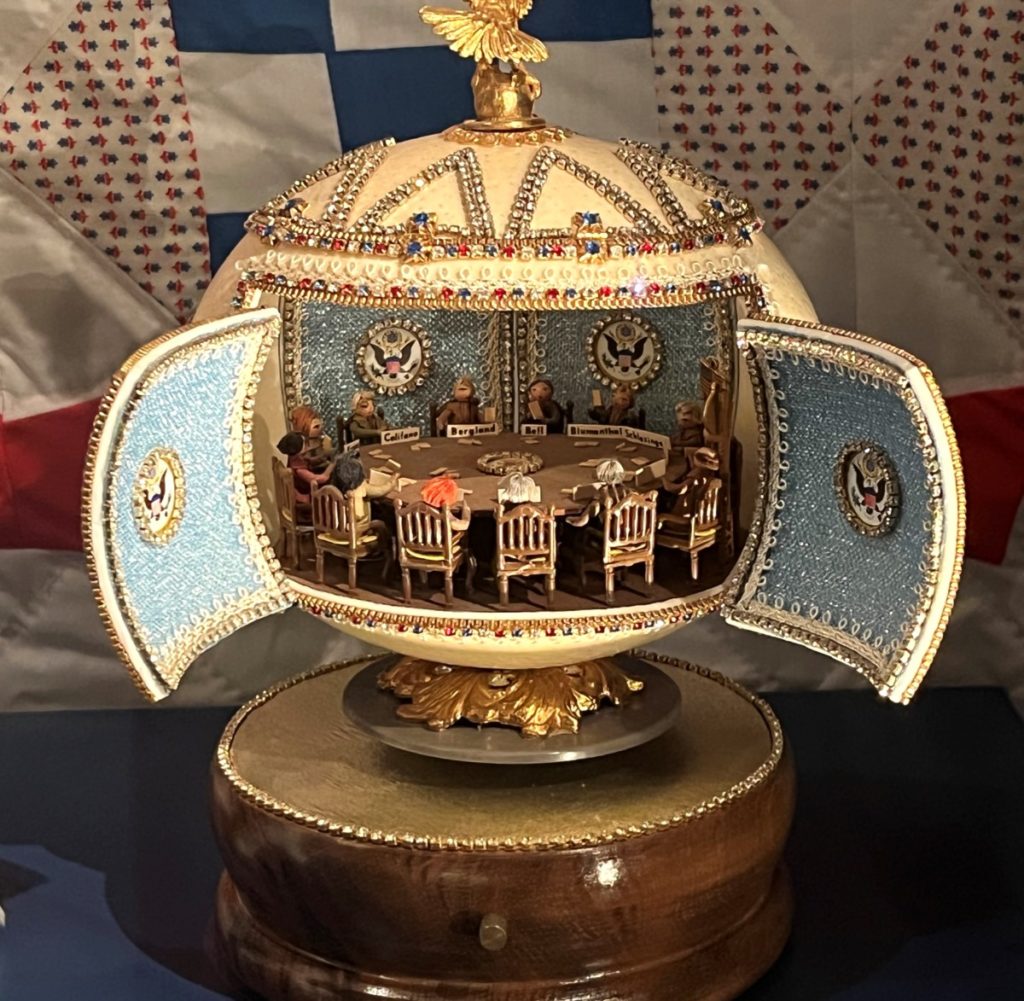
Gifts to Carter and his wife during the presidency proudly line the glass cases along the walls. My favorite was an ostrich egg featuring a Cabinet meeting in progress.
Various artifacts, photos, and campaign buttons line the wall. Of particular interest to me was the famous “red phone.” I always thought it was a direct line to the Soviet Union, but learned it connected to US military command centers.
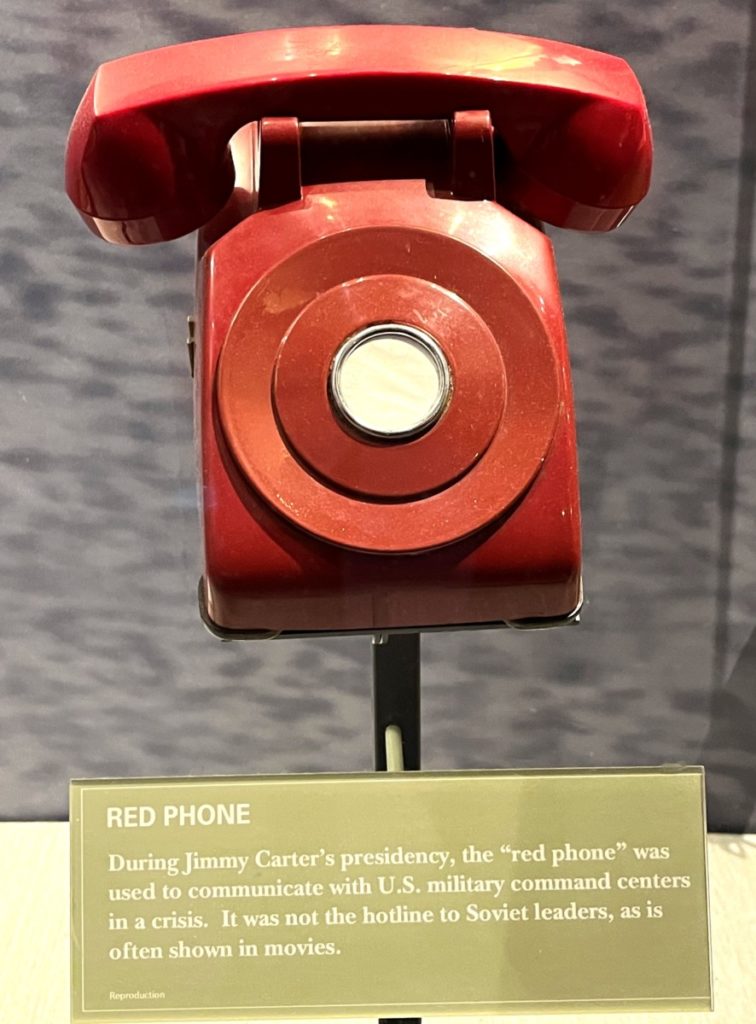

Another area focused on the Iranian hostage crisis, which I remember dominating the news in my childhood. While listening to Carter talking about meeting the freed hostages in Germany, I saw the blindfold worn by one of the hostages.
Post Presidential Life
In 1980, Ronald Reagan defeated Carter by a landslide. Leaving the White House with a dismal 34% approval rating, Carter and his wife moved back to Georgia and focused on global humanitarian efforts. Many agree he is one of the best post-presidents our country has seen.

The museum details his post-presidential activities, including his involvement with Habitat for Humanity, teaching at Emory, and writing books. The Carters could have stopped there, but instead, they assisted many countries with peace treaties, transfers of power, and elections. In 2002, he received the Nobel Peace Prize.
Conclusion

The Jimmy Carter Presidential Library isn’t something I’d put at the top of my list for things to do in Atlanta, but it is interesting. We spent about an hour and a half here and felt the $12 admission price reasonable. For more information about the hours and fees, click here.
